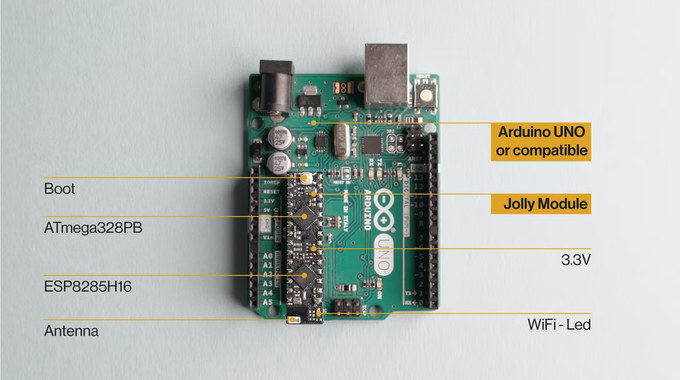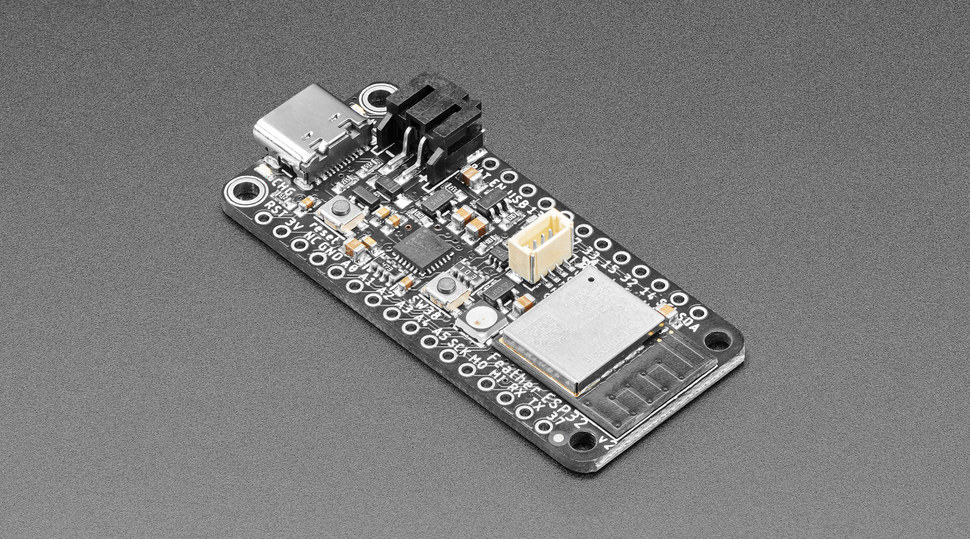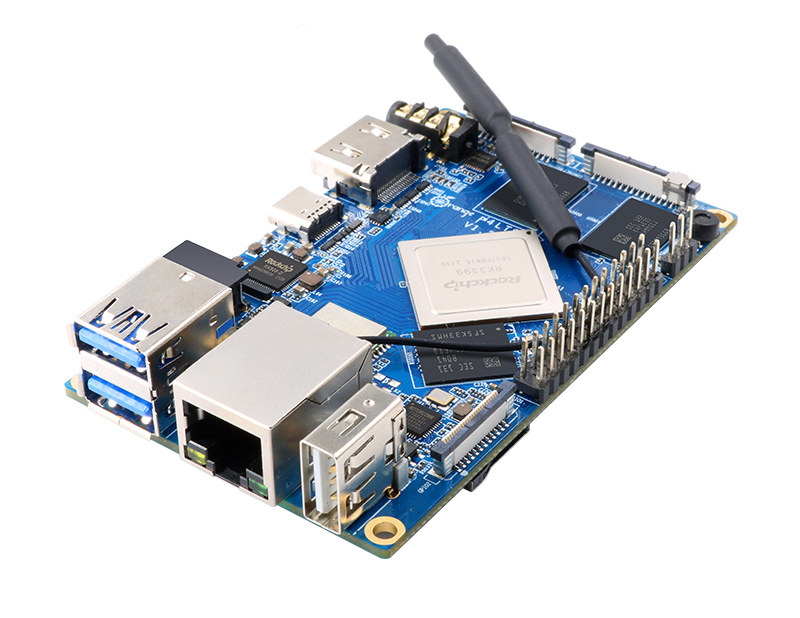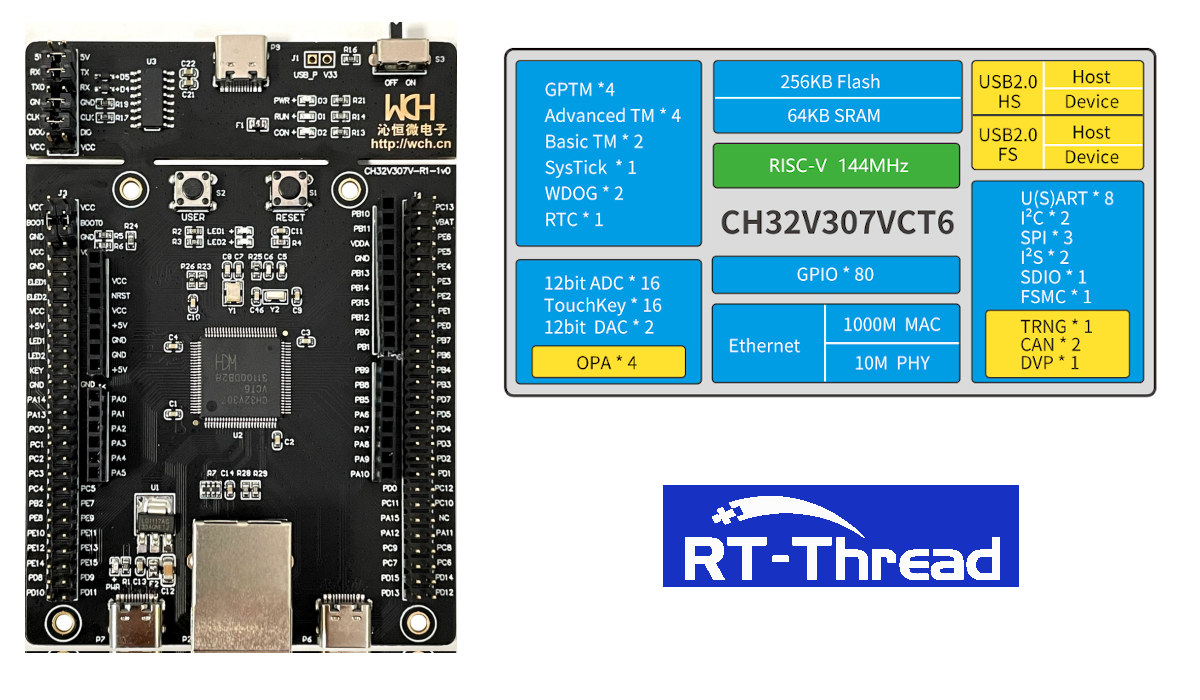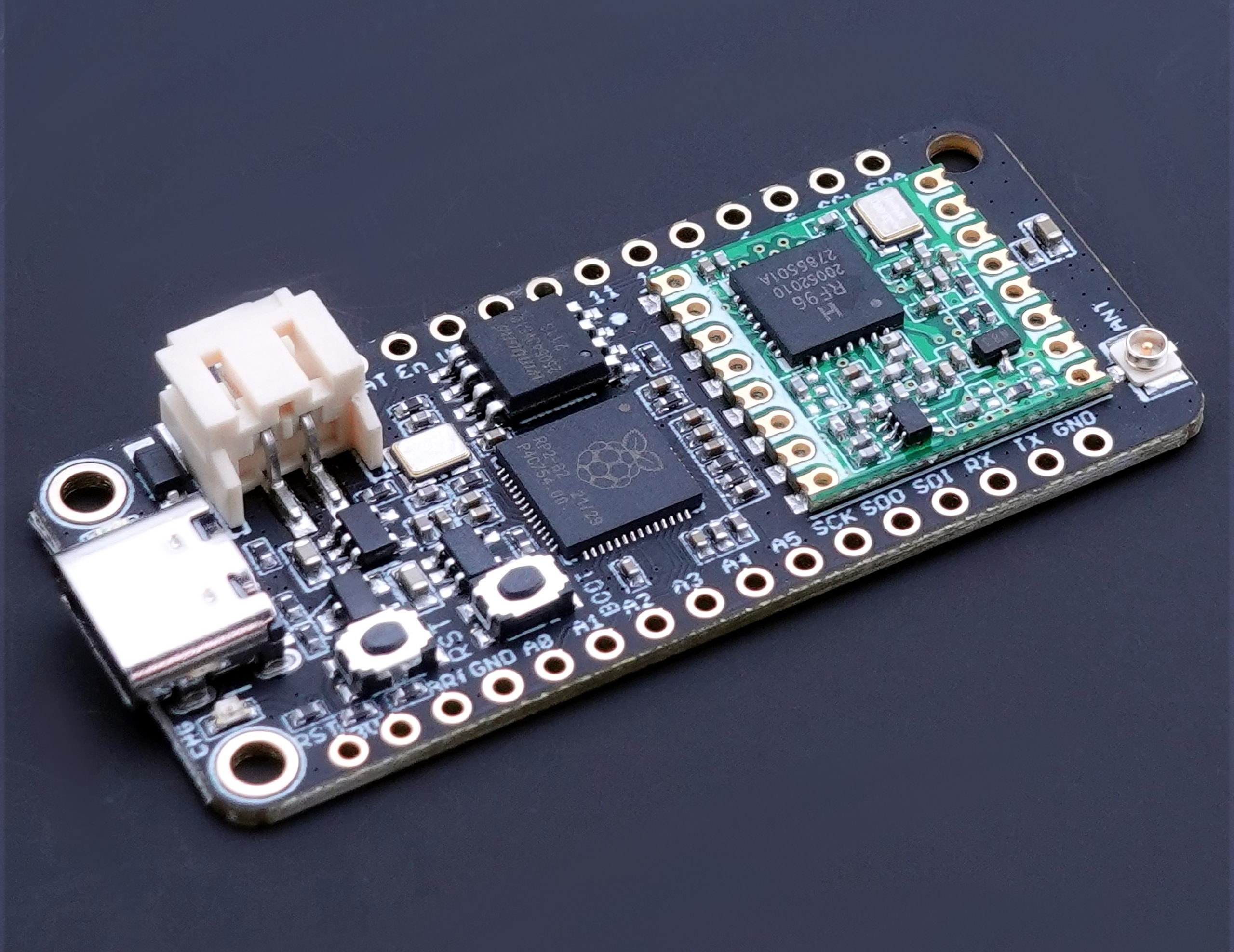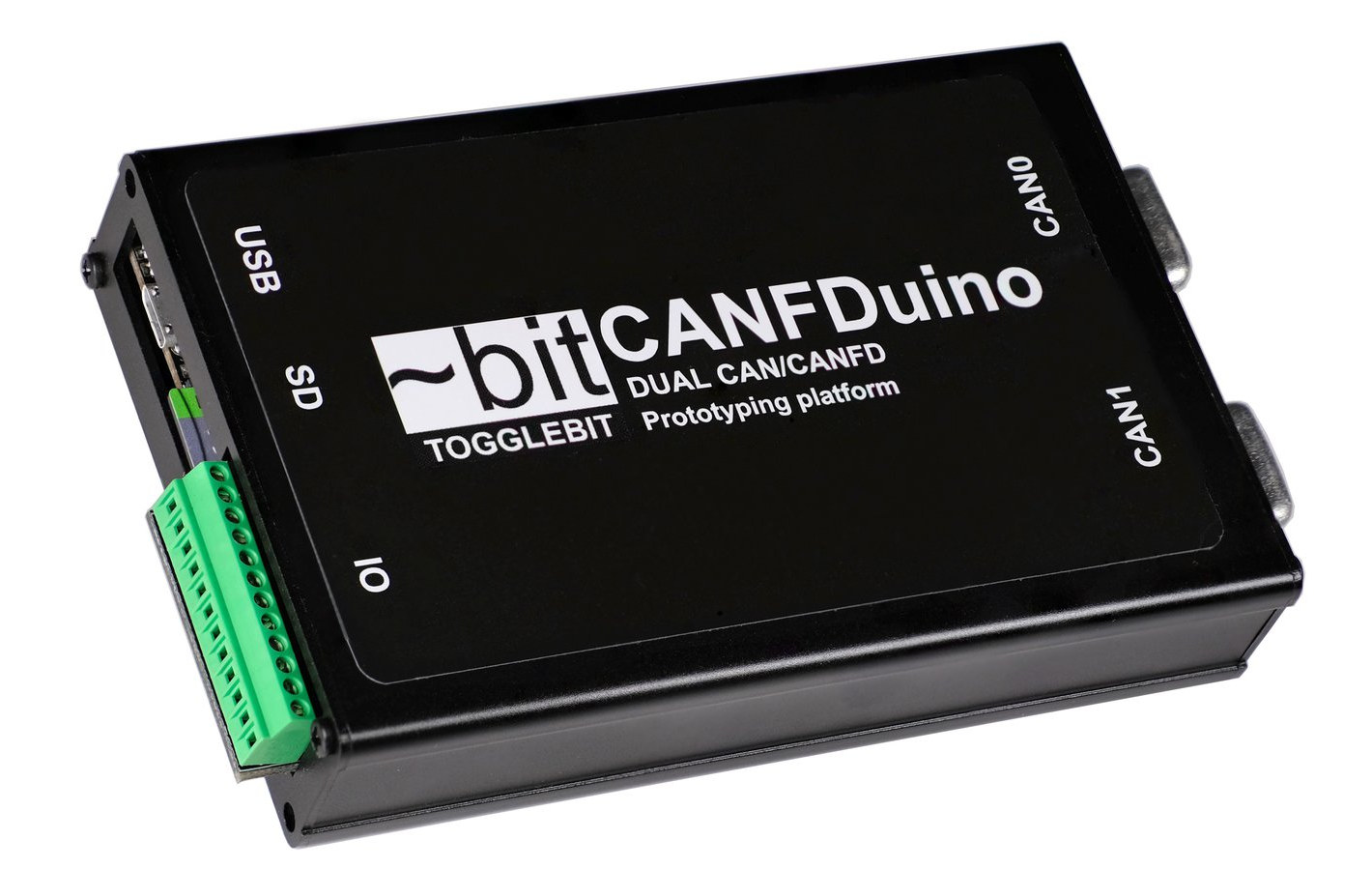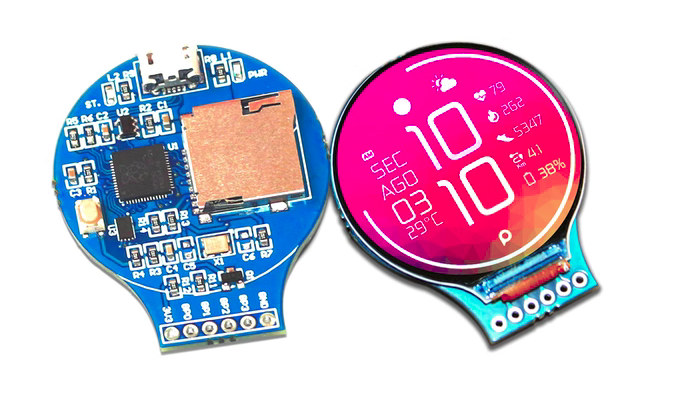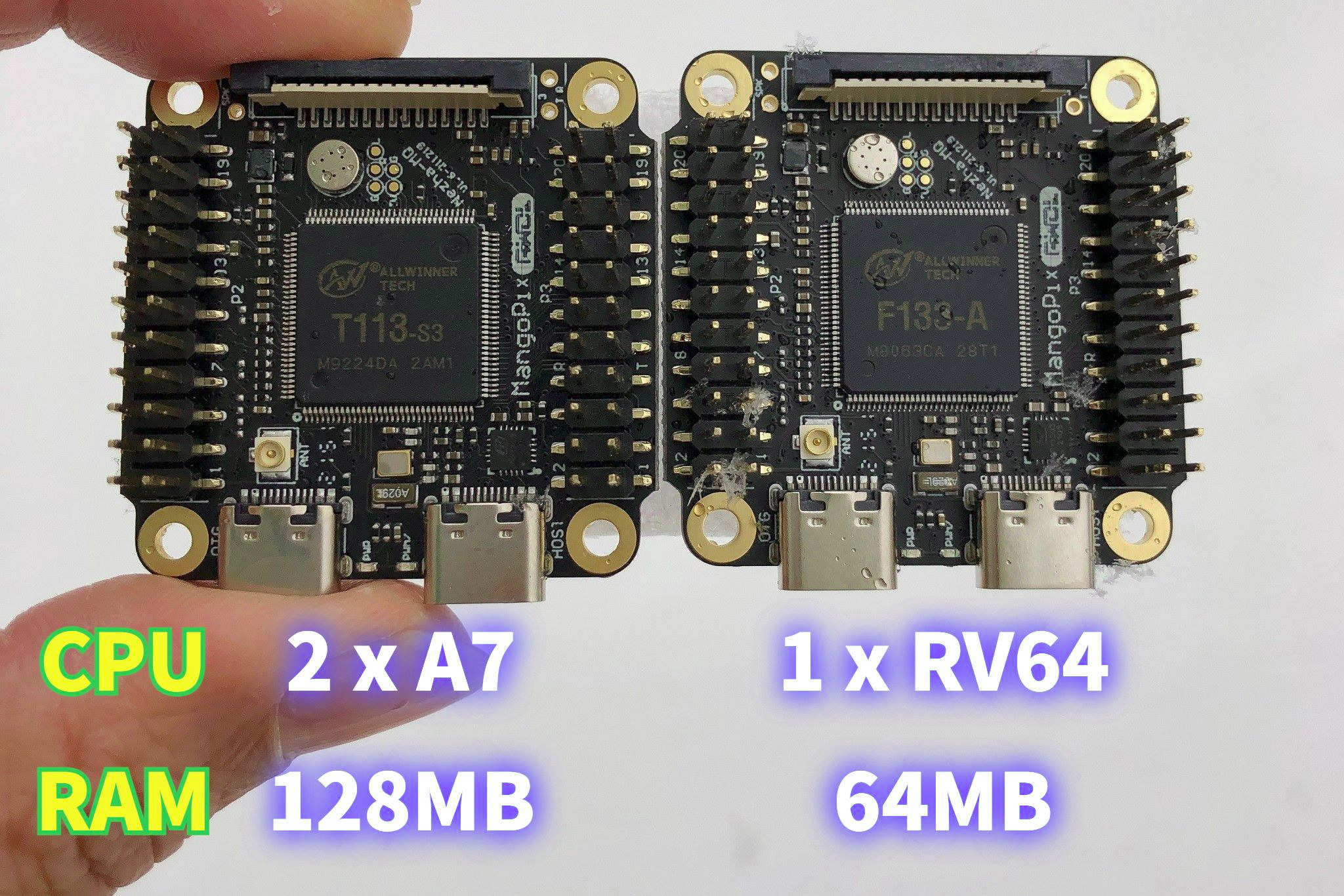Released over 10 years ago, Arduino UNO is still the best-selling Arduino board, but lacking WiFi in the IoT era is not ideal, so Gianluca Martino, Arduino co-founder and working with the company until 2015, decided to design the Jolly DIP module based on ESP8285 WiFi chip that can replace the ATmega328P 8-bit AVR DIP-40 microcontroller. Since ESP8285 cannot provide all I/Os, notably analog inputs offered by ATmega328P, Gianluca combined it with the ATMega328PB microcontroller in a compact SMD package to offer firmware compatibility plus WiFi connectivity in the same DIP form factor. Jolly module specifications: MCU – Microchip ATMega328PB 8-bit AVR microcontroller with 32 KB ISP Flash, 1 KB EEPROM, 2 KB SRAM (Based on data from the datasheet) Wireless chip – Espressif Systems ESP8285H16 WiFi SoC with 2MB integrated flash plus ceramic antenna Communication interfaces between the two chips – SPI + UART (the latter exclusively for ESP8285 […]
Adafruit ESP32 Feather V2 ships with 8 MB Flash, 2 MB PSRAM, USB-C port, and more
Adafruit ESP32 Feather V2 (aka Huzzah32 Feather V2) is an upgrade to the company’s HUZZAH32 ESP32 Feather, still based on ESP32 WiFi & Bluetooth processor, and designed with the initial goal of replacing the obsolete CP2104 with the CP2012N USB to TLL chip. But Adafruit ended up doing a complete redesign with extra storage (8MB flash in total), 2MB PSRAM, a USB-C port replacing the Micro USB port, an extra tactile switch, an RGB LED, lower power consumption, and more. Adafruit ESP32 Feather V2 specifications: Wireless module – Espressif Systems ESP32-PICO-Mini-02 (PDF datasheet) with an ESP32 dual-core Xtensa processor @ up to 240MHz with 2.4 GHz WiFi and Bluetooth Classic/LE, 8MB flash, 2MB PSRAM, PCB antenna, FCC/CE certification. USB – USB Type-C port for power and programming via CP2102N chipset I/Os 16-pin and 12-pin GPIO headers with GPIOs, analog inputs, I2C, UART, SPI, DAC, etc… STEMMA QT connector for I2C devices, […]
$55+ Orange Pi 4 LTS SBC features YT8531C Ethernet PHY, CDW 20U5622-00 wireless module
Orange Pi 4 LTS is a cost-optimized (and availability-optimized) variant of the Rockchip RK3399 powered Orange Pi 4 single board computer that was introduced in 2019 with 4GB RAM for $49.90 and up. Shenzhen Xunlong Software mainly kept the same design with the cost savings involving a choice of 3GB or 4GB RAM, and the replacement of Realtek Ethernet PHY and Ampak wireless module with the equivalent MotorComm YT8531C Ethernet chip and CdTech wireless module with WiFi and Bluetooth 5.0 connectivity. Orange Pi 4 LTS specifications with changes highlighted in bold: SoC – Rockchip K3399 hexa-core big.LITTLE processor with two Arm Cortex A72 cores @ up to 1.8 GHz, four Cortex A53 cores, and an ARM Mali-T860 MP4 GPU System Memory – 3GB or 4GB LPDDR4 Storage – MicroSD card socket, optional 16 GB eMMC flash Video Output/Display Interface HDMI 2.0 up to 4K @ 60 Hz LCD connector for […]
RISC-V design challenge – Get a free board, RISC-V chips, and cash prizes
A little while ago, I wrote about WCH CH32V307 32-bit RISC-V MCU that was found in a board with eight UART ports that could be controlled over Ethernet or USB, and the company has released some source code to use the board while inviting the community to submit pull requests to the project. But now WCH, RT-Thread, LCSC, and EasyEDA have joined hands to launch the RISC-V design challenge where the companies will provide a free board or two RISC-V chips to selected participants, as well as cash prizes with up to $1000 offered to the best projects. The companies have prepared 300 boards and 200 chips for this contest. All you need to do to get a chance to get either one CH32V307V-EVT-R1 development board or two CH32V307 RISC-V microcontrollers is to enter your contact and project details in this Google form by April 30, 2022. The conditions are […]
Challenger RP2040 LoRa board combines Raspberry Pi RP2040 MCU with RFM95W LoRa module
Invector Labs is now offering a variant of the WiFi-based Challenger RP2040 board with a LoRa radio. The Challenger RP2040 LoRa board features the Hope RF RFM95W LoRa radio transceiver module instead of the ESP8285 WiFi chip found in the original board. Raspberry Pi RP2040 has already been used in combination with a LoRa module, notably in Rakwireless RAK11300 WisDuo LPWAN module and the “LoRa Expansion for Pico“, a baseboard for Raspberry Pi Pico equipped with a LoRa module, but it’s the first time I see the combination in a development board form factor, which as a potential bonus following Adafruit Feather form factor. Challenger RP2040 LoRa board preliminary specifications: MCU – Raspberry Pi RP2040 dual-core Cortex-M0+ MCU @ 133MHz with 264KB SRAM Storage – 8MB flash Wireless module – Hope RF RFM95W connected via SPI channel and some GPIOs 168 dB maximum link budget. +20 dBm – 100 mW […]
CANFDuino – A Dual CAN Arduino based platform with enclosure, proto area (Crowdfunding)
CANFDuino is an Arduino-compatible dual CAN bus platform with CAN FD support that can be used for both prototyping and deployment on the field thanks to its rugged aluminum enclosure, two DB9 CAN connectors, an IO terminal block. The board is powered by a Microchip SAMC21G18A microcontroller with CAN-FD support, a MicroSD card slot, a micro USB port, various analog and digital I/O, as well as a prototyping area allowing users to solder their own components to the board if needed. CANFDuino specifications: MCU – Microchip SAMC21G18A Arm Cortex-M0+ microcontroller @ up to 64 MHz with 32KB SRAM, 256KB flash Storage – MicroSD card slot I/Os 2x DB9 connectors with CAN/CAN-FD up to 5 Mbps 12-way screw terminal block IO Through holes with 10x analog inputs Up to 24 digital IO w/14x PWM 2x UART (+1 UART2USB) 1x I2C,1x SPI 3.3V and 5V supplies Prototyping area for soldering extra […]
Round color LCD board comes in Raspberry Pi RP2040 or ESP8266 flavor (Crowdfunding)
Roundy is a board with a 1.28-inch round color LCD with 240 x 240 resolution that is offered with either a Raspberry Pi RP2040 MCU or an ESP-12E WiFi module, with the variants respectively called RoundyPi and RoundyFi. Both boards come with a micro USB port for power and programming, a button for flashing the firmware, and six pins with power signals and four GPIOs. One difference is that the Raspberry Pi RP2040 board includes a MicroSD card for data storage. Roundy specifications: MCU / module RoundyPi – Raspberry Pi RP2040 dual-core Cortex-M0+ microcontroller @ up to 133 MHz with 256KB SRAM RoundyFi – ESP-12E module with ESP8266 microcontroller @ up to 160 MHz with 160KB SRAM, 4MB SPI flash External storage (RoundyPi only) – MicroSD card socket Display – 1.28-inch round LCD with 240 x 240 resolution, 65k colors; GC9A01 SPI display driver. (It appears to be that model) […]
RISC-V or Arm? This tiny 4x4cm Linux board with WiFi offers both options
Last fall, we wrote about Allwinner D1s/F133-A RISC-V processor and the upcoming MangoPi MQ1, a tiny 4x4cm board based on the processor. The board is not for sale, but we have more details, and the company is also working on an Arm version equipped with Allwinner T113-S3 dual-core Cortex-A7 processor that is pin-to-pin compatible with F133-A SoC. The Allwinner F133-A board will finally be called MangoPi Nezha-MQ, or MangoPi MQ for shorts, and come with 64MB on-chip RAM while the Allwinner T113-S3 board, with 128MB on-chip RAM, will be named MangoPi MQ-Dual. Both are fitted with a Realtek RTL8189-based Wi-Fi module, offer display and camera interfaces, two USB-C interfaces, and headers for GPIOs. MangoPi MQ RISC-V or Arm Linux board MangoPi MQ/MQ-Dual specifications: SoC (one or the other) MangoPi MQ – Allwinner D1s/F133-A 64-bit RISC-V processor @ 1 GHz with 64 MB DDR2 MangoPi MQ-Dual – Allwinner T113-S3 32-bit dual-core […]

